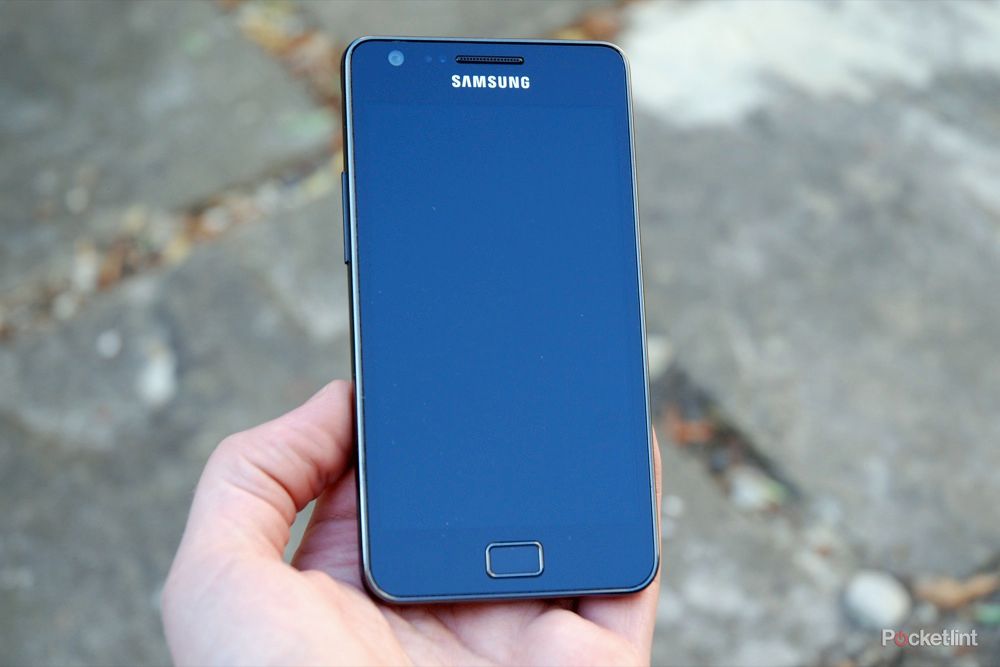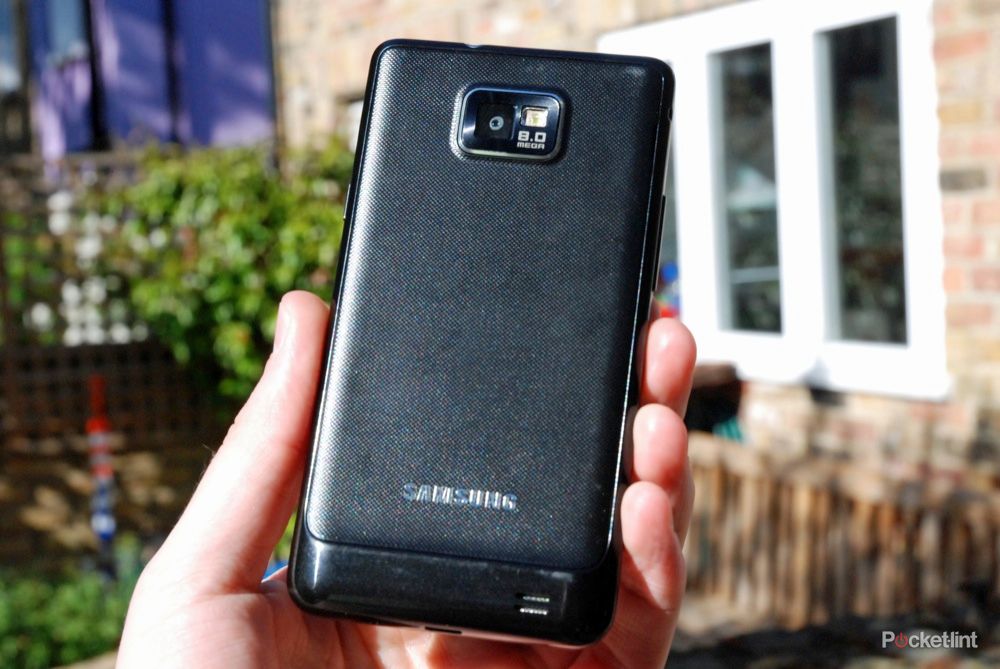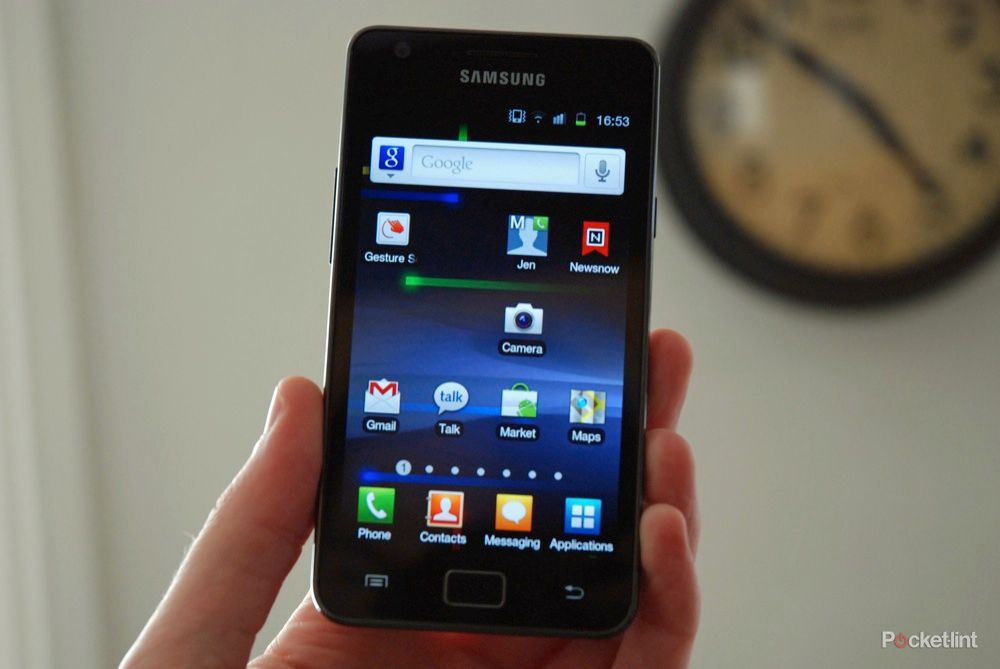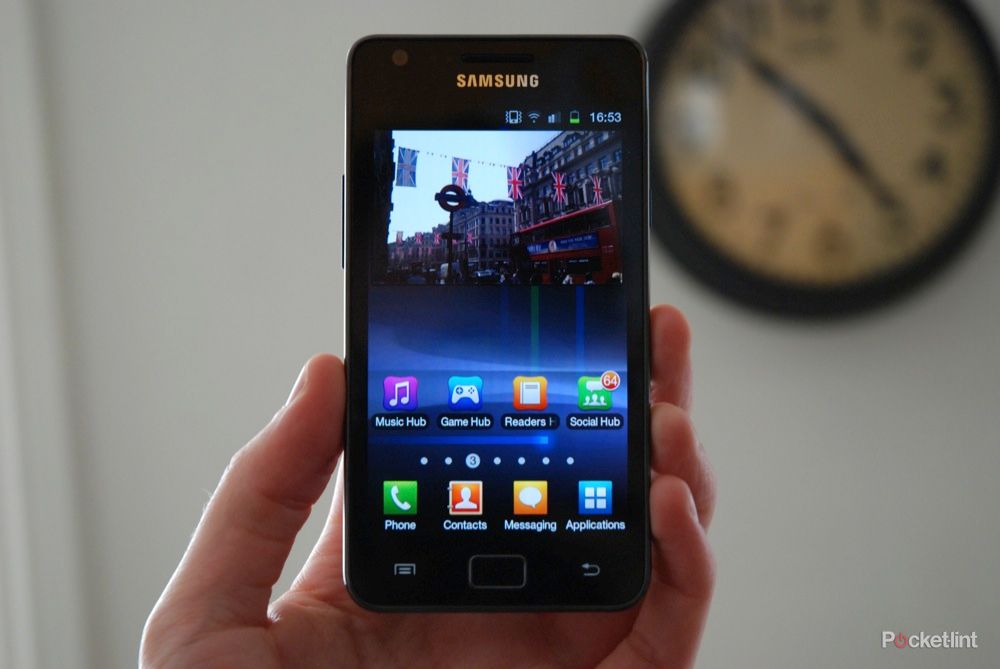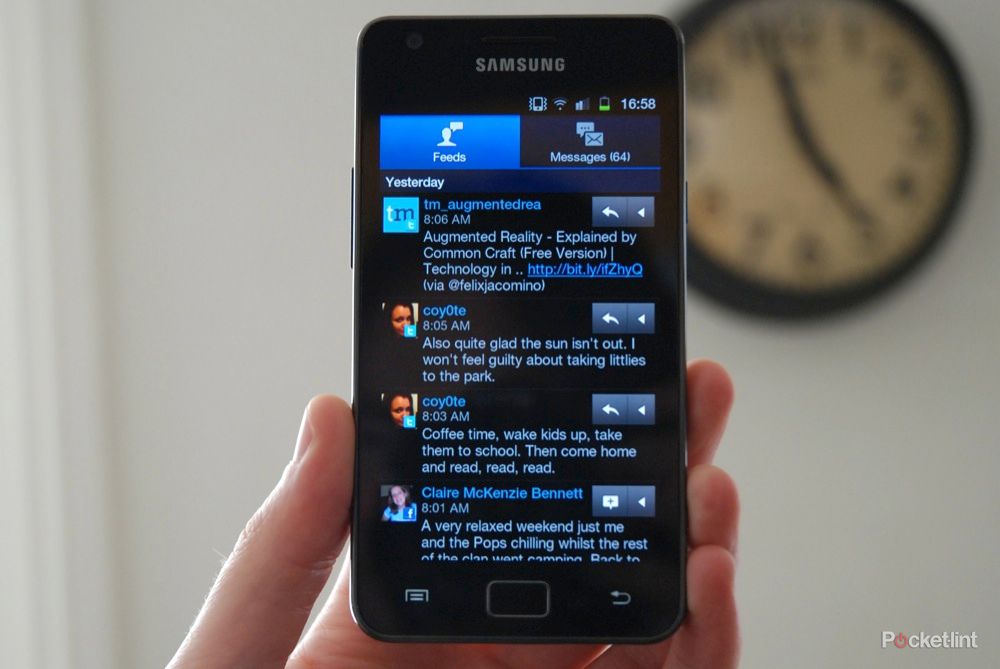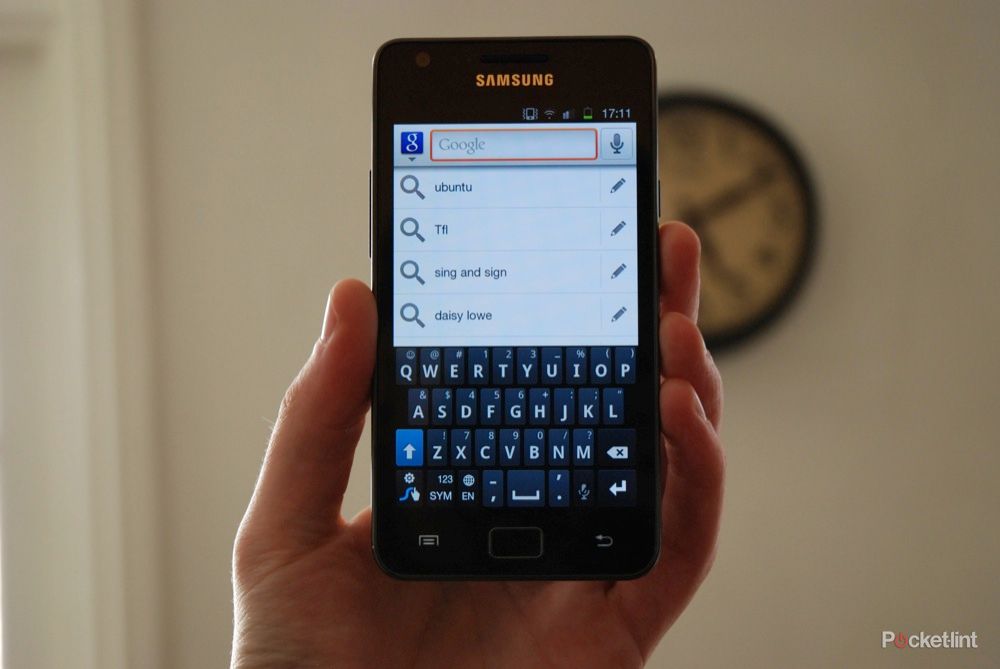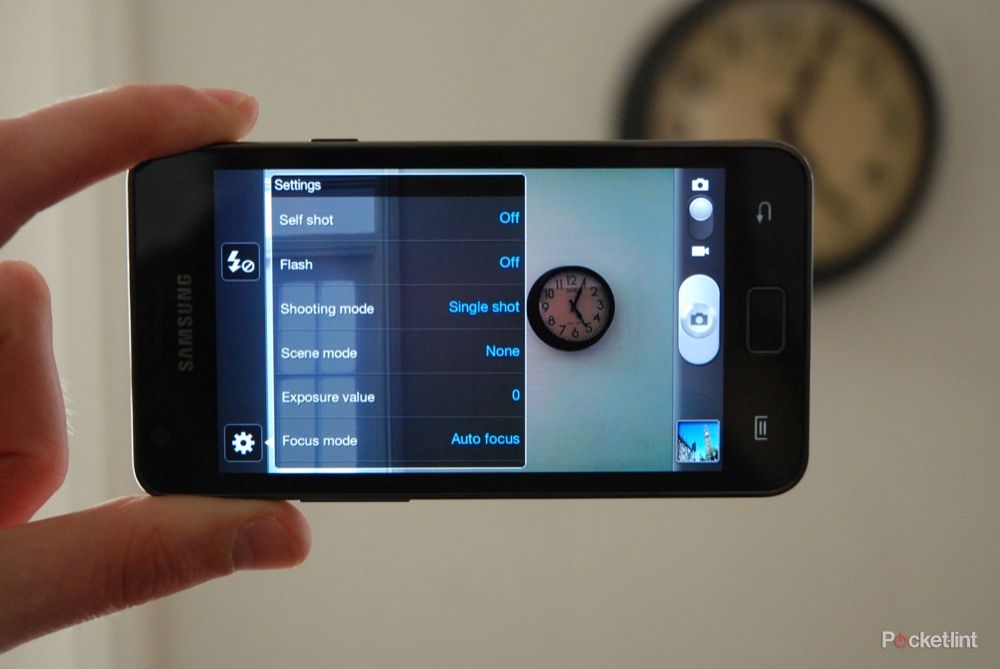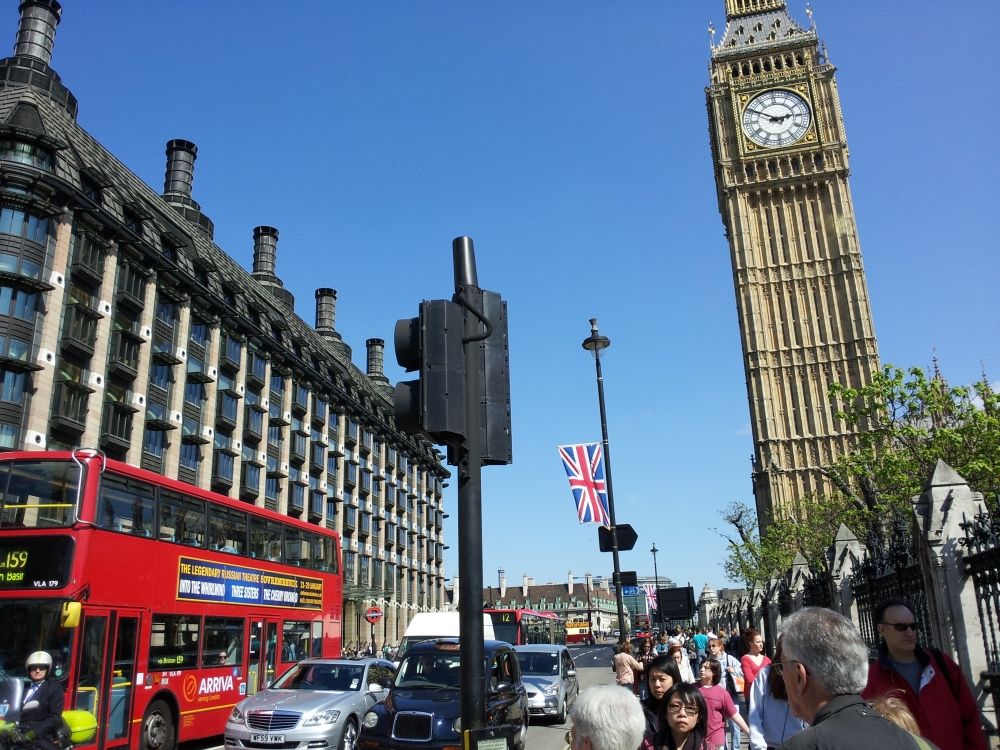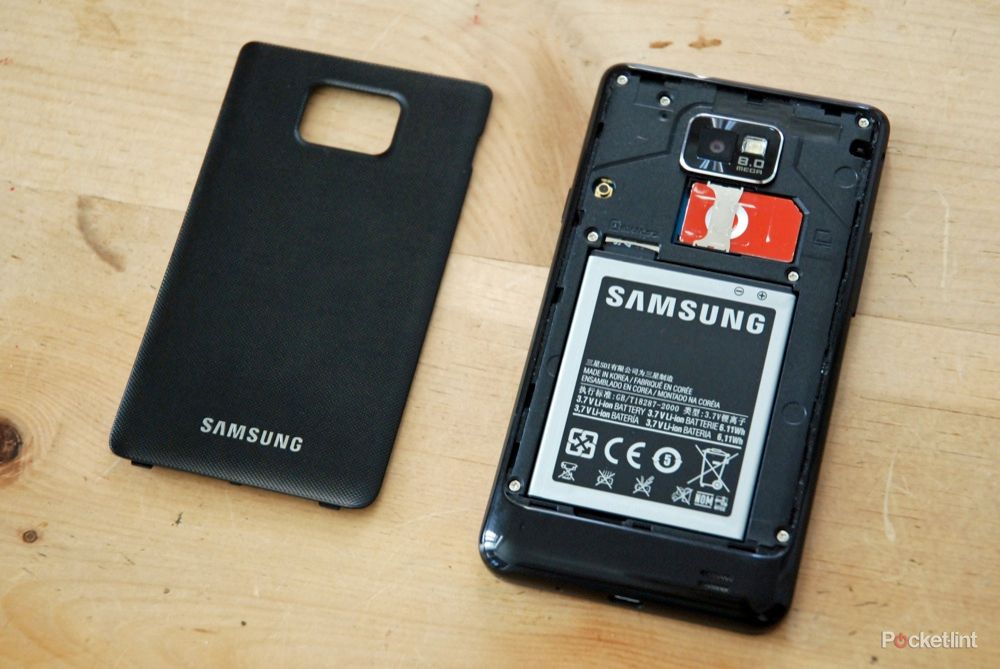The Samsung Galaxy S II is a serious smartphone. It has everything, at least on paper. But just because a phone comes fitted with the latest version of the Android operating system, a dual core processor and a size of screen you could you could pop on stand in the corner of your living room, that doesn’t necessarily mean that it actually performs as well as it should. Fortunately, this is a handset that does deliver on just about every front and having lived with it, slept with it, eaten our breakfast and brushed our teeth with it, these are the results of its full review according to the benchmark establishment that is the Pocket-lint labs.
Our quick take
The Samsung Galaxy S II is better than any other Android smartphone to have hit the market so far. It has everything you could want and will need and each of those functions it more or less excels at. It’s fast, it’s bright, it’s clear and, joy of joys, that TouchWiz 4.0 UI does not get in the way of a cracking mobile experience.
Naturally, there are niggles - we’ve wrung this thing dry looking for them - but no one buying this superphone will have anything to complain about. Yes, the 1080p DLNA streaming could be better, yes the camera lens isn’t perfect and sure, if you really want to dig, you could ask for a few more pixels but, let’s get this in perspective for a second. This is a phone, a jack of all trades, and if you want a better home cinema server, camera or TV, then the only way you’ll get one is by buying a specialist device. It’s time to crack open the piggy bank.
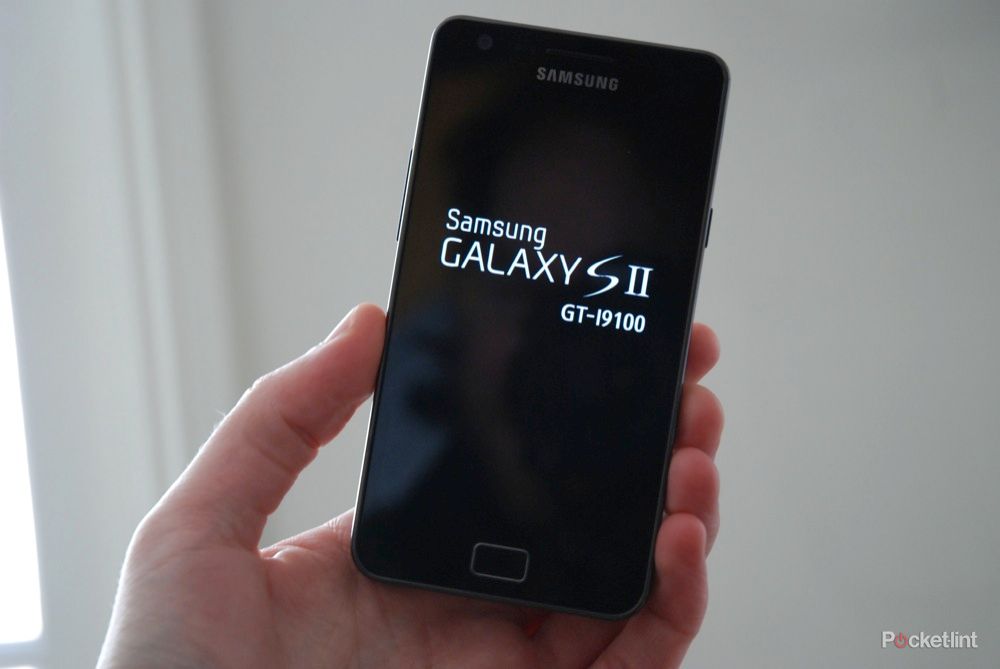
Samsung Galaxy S II - 4.5 / 5
| FOR | AGAINST |
|---|---|
|
|
On the looks and feels front, there’s only one way to describe the Samsung Galaxy S II: it’s a grower. On first inspection, it is a bit of a slab - a very thin, very light slab, granted but a slab none the less. It’s large, it’s flat, it’s very black and all that you notice when you look face-on is the Samsung logo at the top, the 2-megapixel front-facing camera to the left and the metal encircled, push-in home key at the bottom. It’s almost as if Samsung only bothered rounding off the corners to make sure nobody started suing with head injuries. It has an entirely inoffensive aesthetic design but it doesn’t scream out “I am the best smartphone on the planet”. In some way, we rather wished it did in order to extract anticipated oohs and aahs from our jealous friends and colleagues. That may sound stupid but when you spend top dollar on a top device, it’s a little disappointing when nobody else is impressed.
- Best smartphones: The top mobile phones available to buy today
- A timeline of Samsung's flagship Android phones in pictures
However, get the thing into someone’s hand and you’ll watch their expression change. The two almost guaranteed responses are either “wow, that is thin” or “that is really light”. Either way, you’ll finally get that inner glow and social affirmation that you were hoping for when you choose this phone. It is thin. Seriously thin; 8.49mm thin, as a matter of fact, which is less than the width of a CD case, around the same as 80 sheets of copier paper stacked up and not a lot longer than the length of a typical red ant, and it is all the better as a smartphone for it. In fact, you soon realise that it makes no difference how big the front face of a phone is. It’s that thickness that counts when it comes to stuffing the thing into your pocket. Combine that with the super-light (for a smartphone) mass of 116g - approximately the weight of 20 US quarters - and it’s quite easy to forget that you’re carrying the device around altogether.
At the same time, it’s also rather sturdy. It’s not single machine piece of metal sturdy but there is certainly no creaks or play when you give it a shake and a twist. In fact, given that the unibody boasts of the likes of HTC are getting a little less classy as each handset comes out, the look and feel of the Samsung Galaxy S II and its bit of metal here and section of plastic there are certainly in the same league. Yes, the back cover is of the flimsy kind that seems all too popular these days, but the texturing is nice enough and it sits on just fine as well, and, all in all the minimalist design of the handset is actually really good all the way down to the slight reverse chin at the back on the bottom - as seen on the original Samsung Galaxy S. It’s no work of art, but you’ll quickly appreciate it’s understated solemnity and almost quite enjoy it when people don’t recognise the mighty power that lies within.
Probably the only design gripe for the body would be the fact that the on/off/sleep/wake button (all the same one on the right side of the phone) sits exactly opposite the volume rocker which means you end up squeezing both quite often when you’re only trying to hit the one. To be fair, it never caused a disaster, dropped call or accidentally discarded e-mail but the worry was and is there none the less.
Other than that, the presentation of the four Android keys is the only grievance. Firstly, the hard search button is absent. Not good news. Samsung might have thought that it’s unnecessary but it’s not. Not only does it add an on screen click every time you want to search any app or part of your phone but without it you can’t press and hold to easily trigger the Google Voice Activation system which is one of the great pleasure of running Android. Naturally, it still works, but it takes a bit more faff to get to and that might be the difference between using voice and not bothering at all.
Aside from that, having a raised, mechanical home key in the middle, iPhone-style, isn’t needed and slightly put us off using it in favour of the on-screen option, plus making the “menu” and “back” touch-sensitive buttons either side go dark unless you set the phone otherwise is a little bit silly.
When you finally stop gawping at your expensive new present to yourself and turn the thing on, you’ll be hit by that rather splendid 4.3-inch capacitive touchscreen. Read the manual or the spec sheet online and you might be a little worried by the comparatively mid-range 800 x 480 pixel display. However, there’s no need to be alarmed. Fortunately, Samsung’s decades of panel making pay off and it’s obvious the minute the phone comes to life. The Super AMOLED Plus technology (don’t ask us what the Plus is all about, the Super was enough to contend with the first time around) brings really punchy colours, top notch contrast and a really crisp image no matter what’s on show.
The blacks are decent if not spectacular and probably the only time you might notice that the resolution isn’t up to Retina or Reality levels is occasionally when you’re browsing the web. If an article you’re reading has a particularly wide column and you’re trying to fit the entire breadth on the screen, the size of the font needs to be quite small and at that point, you can start to see where having a few more pixels might just help sharpen up the fine print a little but, as with most complaints we have for the Samsung Galaxy S II, it’s a minor gripe.
One of the bigger failings, however, is that rather annoying blue tint that a few of the past Samsung mobile screens have tended to have. You won’t notice it most of the time but it’s enough to lead you to wrongly start mucking around with the white balance every now and then when you’re taking a picture. Don’t let it lead you astray. Besides, the white balance presets are generally a waste of time anyway, but more on that in a moment.
Probably best of all about the screen is that it’s perfectly responsive, more so than last year’s flush of Android phones and that 1.2GHz dual core processor and 1GB of RAM working away in the background might have something to do with it. It never seems to stutter no matter what apps you’ve got open in the background or how crazy and resource sucking your live wallpaper is. What’s more, it almost feels soft and silky smooth to the touch; likely down to a good oleophobic coating. Naturally, you are going to grease the thing up with your fingers but it’s not quite the same feeling of running into rough when you do that with the likes of the HTC Desire S.
One of the biggest worries about the handset, as often the case with Android, is over the custom UI that Samsung has chosen to slap on top of the system. The short answer here is that TouchWiz 4.0 is ok or, more to the point, largely unobtrusive. You can’t turn it off as such but you can turn it down to such a degree that it almost looks and feels like a Nexus phone.
There are a couple of slight errors that you can’t do anything about. The seven home screen desktop is all very well but the primary one sits to the far left rather than in the middle meaning that it takes a fair bit of finger flicking to get to numbers four, five six and seven. Fortunately, just like with HTC Sense and everyone else these days, there is an overview which you can activate in that same pinch and zoom way to get you from one to the other a little quicker.
The mini dock at the bottom is also something of a waste of screen space. It presents four permanent app icons, two of which are essentially the same - contacts and phone. Each connects you to the same app and it would have been nice to have a one touch browser button there instead as you find on standard Android Gingerbread.
Fortunately, the beauty of the system is that you can add your own one-touch shortcuts and another curious difference is that TouchWiz forces you to keep them all regimented almost as part of an incomplete app grid. In other words, you can’t quite pick up and drop each icon exactly where you want it. We couldn’t quite decide whether this made it better or worse. More than anything, it’s just worth pointing out the difference.
Another clear change from straight Android is the app grid itself. It’s essentially identical to the iOS system a seemingly limitless number of pages which scroll left to right in a continuous loop. Unlike a Nexus system, you can create folders and group the apps inside or you’re welcome to pick and place them wherever you wish but there is no automatic alphabetisation.
Amongst all of your regular third party bits and pieces, Samsung has also placed some apps of its own for you to use. The most significant of these are the so-called hubs - one for music, one for books, one for games and one for social. They range from quite useful to a total waste of time but they won’t get in the way if you don’t want them to and it’s easy enough to delete them altogether.
The best of the bunch is probably the Readers Hub with access to newspapers, books and magazines powered by PressDisplay, Kobo and Zino respectively. There’s plenty of introductory freebies on offer as well as host of public domain novels to download and the big clear screen makes it a pleasure to use as a mini ebook reader and certainly significantly better than a smaller smartphone size even if you do still end up turning pages a little too often.
Next down on the list of usefulness is the Social Hub and the best thing it seems to do is combine your Facebook and Twitter feeds into one stream. It’s not as good as the Friend Stream on HTC Sense (if you’re into that sort of thing) and it’s something that we found ourselves using less and less as the review period went on.
The Games Hub offers more direct access to the premium game titles from Gameloft, which you can’t find on the Android Market, as well as some social gaming titles as well. Again, lots of free trials on offer to get you hooked before you buy, but it’s just as easy to find them using your browser.
Last of all is the Music Hub where you can buy songs from 7digital and organise you music. The interface is much the same as the standard Android Music app and there really isn’t anything to get excited about here.
Fortunately, some of Samsung’s other app additions are very welcome indeed. Kies Air allows you to upload and download wirelessly from any computer anywhere. The app gives you a URL to paste into a computer browser with the IP of your phone on the network and when you navigate to it, you’ll see a perfectly functional, if slightly basic, looking interface where you can easily transfer all the files you need. Very useful indeed and it certainly beats having to take a cable with you everywhere.
The other app to enjoy is the Samsung AllShare DLNA system which will allow you to wirelessly stream pictures, audio and video. In practice it works very nicely but the results aren’t quite as good with HD video. By the time you hit 1080p, you’ll notice stuttering streams and, ultimately, we’d have to recommend relying on the MHL/micro USB socket for hard wiring an HDMI-out cable instead if you want to watch content on your TV.
The last piece of software of note in TouchWiz 4.0 is Swype and if you haven’t used it, it’s certainly worth a try. For the while, you can’t get it in the Android Market and the tutorial on the phone will show you how it’s all done. An email or two later and you’ll start to realise how quick it is and it’s really too tough to call whether it’s Swype or Swiftkey that represents the way forward. What we will say is that despite being used to Swiftkey, we happily stuck with Swype throughout the test.
Another of the great successes of the custom UI is actually a very small one but it makes all the difference. Samsung has thought to include the power saving widget at the top of the notification screen. What that means is that you can turn Wi-Fi on and off from anywhere in the system with just two quick touches and anyone who owns a smartphone will tell you how often you need to do that to eke out your battery life as far as you can.
Finally on the UI, the phone will try to push some kind of zooming in with your thumbs system on you at all times. Ignore it. Switch it off. The idea is that you’re supposed to place both thumbs on the screen at the same time and then tilt the phone either towards or away from you to zoom in and out. Pinch and zoom is a thousand times easier, more natural and more convenient. End of chat.
Imaging is another of the strong suits of the Samsung Galaxy S II and the phone does not disappoint in this department. The 8-megapixel camera with AF and flash takes cracking shots and will probably only be beaten by the likes of Nokia’s top end cameraphones or the Sony Ericsson Xperia Arc. There are bags of options within the camera app - ISO, exposure adjustment, timer, anti-shake, light metering options, 13 scene modes and four filters - but what we really liked was the Outdoor Visibility mode which puts the screen up to maximum brightness so that you can see what you’re shooting even in bright sunlight (even if it does switch itself off every time you come back to the app) and the fact that the shutter delay is as short as you’ll find on any smartphone.
It’s not all plain sailing though. As we said before, the white balance presets are largely useless. They didn’t correct properly for the situations that they were supposed to. In fact, they only skewed the colours even further, so do keep that one on automatic. The macro is also slightly frustrating. You can get fairly close - around 5cm or so - but get any nearer and you’ll watch the AF go sharp and then fail to stick. If the software was a little better you could probably get as close as 3cm.
The worst offender for the camera is the barrel distortion. Again, most of the time it’s not an issue but the objects at the extremes of the frame tend to lean into the picture a little oddly if you’re tilting the camera up to look at them when held in landscape mode. Take a look at the picture of Big Ben to see what we mean. Naturally, this is a general problem for wide-angle lenses but in the Samsung’s case, it doesn’t even appear to be something you can easily use for artistic effect (but by all means send us a link to your Flickr page if you manage it).
The colours are a B+. Nothing amazing for a cameraphone and nothing too upsetting either. The disappointment comes because the photos look much better on the phone's screen than they do on your laptop. Sadly our Dell is not fitted with a Super AMOLED Plus display but then nobody's is.
On the video side, again there’s plenty of fun to be had. The 1080p recording is faithful for colour, the audio is solid and the continuous AF system ensures that everything stays sharp. The downside to that is that you can almost guarantee a second or so of AF hunting in each clip you shoot which is a little annoying. The 30fps frame rate means that you do pick up some flicker from strip lighting which you can see inside the shops at the beginning and end of the video below but the contrast adjustment is pretty hot with it only obvious for quick changes such as when the silver car appears in the foreground of the clip.
Naturally, results start to get a little grainier and blurrier at low light levels but daytime indoor conditions are perfectly good. It’s only really nightimes and low lit rooms that you need to worry about. Again though, it’s to be expected with even with dedicated pocket video cameras. A trade off of resolution for a little extra frame rate would have been nice to capture faster action but you can’t have everything.
Speaking of having everything, we’d love to tell you all about the NFC feature of the phone but not only are there no apps or systems to test it with but it’s also been confirmed by Samsung that the UK version of the handset won’t even come with the hardware for it either. Something for the SGS3 then. What we can say in the way of the wireless and radio systems is that everything proved to be a-OK. The range was perfectly good but, best of all, the switch from Wi-Fi to 3G and vice-versa is nice and snappy - much faster than the Nexus One and friends.
And while we’re on the subject of this latest generation of smart- or should we say superphone, yes, that dual-core chip and those meatier engine room specs do make a difference. The whole experience is just plain zippy. No lag, no judder, no force closures and no waiting around. If you really want to see it in action, head over to the Gallery app and see how quickly it loads up your thumbnails. Oddly enough, the only time the phone seems slow at all is the slightly too long delay between pressing the wake button and the screen actually coming to life.
Last of all, largely because there’s little to say about it, is the battery life which is average to not so good. A full charge won’t quite get you through a day of heavy use. You’ll make it from about 7am-9pm but if you need to go on consuming video wirelessly through the night, then a lunchtime top up would be well advised.
To recap
The Samsung Galaxy S II is better than any other Android smartphone to have hit the market so far. It has everything you could want and will need and each of those functions it more or less excels at. It’s fast, it’s bright, it’s clear and, joy of joys, that TouchWiz 4.0 UI does not get in the way of a cracking mobile experience

